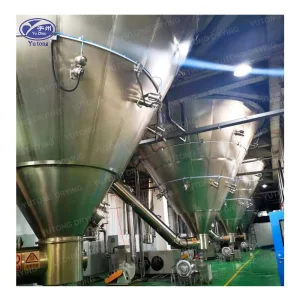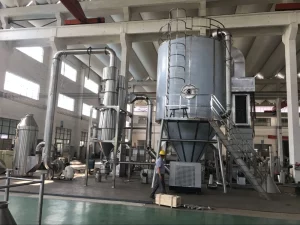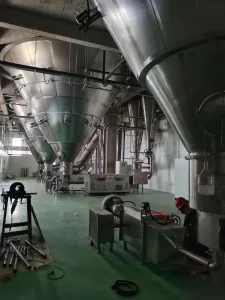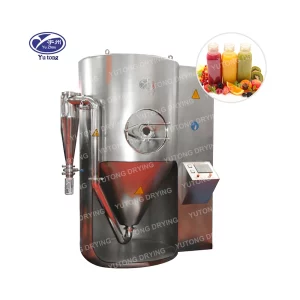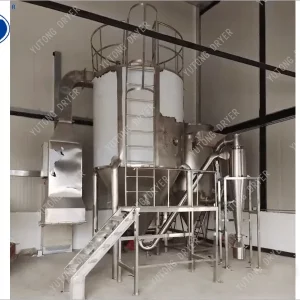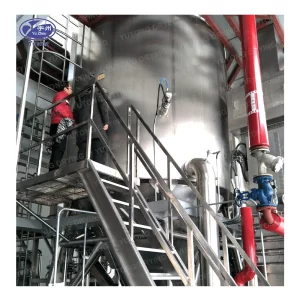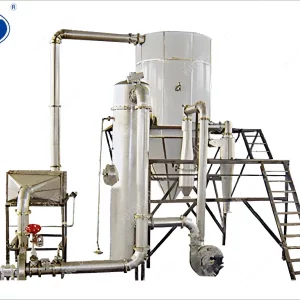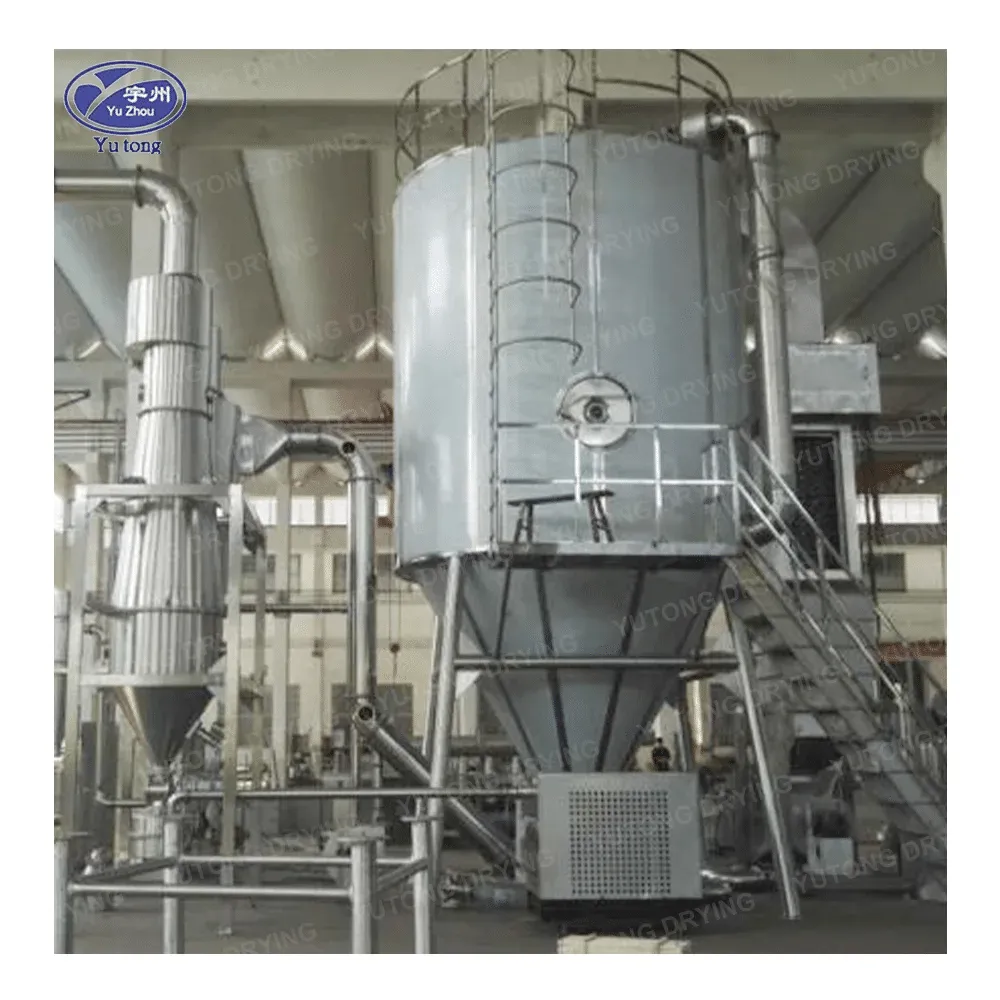Spray drying is a widely used industrial process for the production of dry powders from liquid or slurry feedstocks. It is an efficient method that involves atomizing the feed material into a hot gas stream, resulting in the rapid evaporation of moisture and the formation of dried particles. This process is critical in various industries, including food, pharmaceuticals, dairy, chemical, and ceramic manufacturing.
Principle of Operation
The spray drying process operates on the principle of heat and mass transfer. The liquid feed is atomized into fine droplets using a nozzle or a disc (rotary atomizer). These droplets have a large surface area-to-volume ratio, which facilitates rapid evaporation when exposed to hot air or gas. As the moisture evaporates, the droplets shrink and solidify into dry powder particles.
Process Stages
1. Preparation of Feedstock: The first step involves preparing the liquid or slurry feedstock. This could involve mixing ingredients, adjusting viscosity, or ensuring homogeneity before entering the spray dryer.
2. Atomization: The feedstock is then atomized into tiny droplets through a nozzle or a rotary atomizer. Nozzles can be pressure, two-fluid, or steam atomizers, each with its own advantages depending on the viscosity and desired particle size distribution.
3. Drying Chamber: The atomized droplets enter a drying chamber where they encounter hot air or gas, typically heated between 150°C and 300°C. The temperature is carefully controlled to prevent overheating and degradation of sensitive materials.
4. Evaporation and Particle Formation: Heat from the hot air/gas rapidly evaporates the moisture from the droplets, causing them to shrink and harden into solid particles. The size and morphology of these particles can be influenced by factors such as feed rate, atomization conditions, and drying gas parameters.
5. Collection and Cooling: Once dried, the particles are collected at the bottom of the drying chamber or in cyclones. They may also pass through a cooling section to lower their temperature before packaging to prevent agglomeration.
6. Exhaust Gas Treatment: The exhaust gas, now containing water vapor, is treated to remove any remaining particles and condensable vapors before being released into the atmosphere.
Applications
Food Industry: Spray drying is used to produce instant coffee, milk powders, cheese powders, and flavorings.
Pharmaceuticals: It is employed in the manufacture of dry powders for inhalation therapy and encapsulation of active pharmaceutical ingredients.
Ceramics: In the ceramics industry, it is used to create powders for glazes and ceramic bodies.
Chemical Industry: Spray drying is utilized in the production of catalysts, pigments, and other chemical powders.
Advantages
High Efficiency: Rapid drying leads to high production rates.
Particle Control: Ability to control particle size, morphology, and density.
Continuous Operation: Suitable for large-scale continuous production.
Versatility: Can handle a wide range of feed materials and product requirements.
Challenges and Considerations
Energy Consumption: Spray drying requires significant energy input for heating the drying gas.
Aerosol Generation: The process generates aerosols that must be handled and disposed of properly.
Product Quality: Variability in feedstock properties can affect final product quality, requiring careful monitoring and control.
Spray drying is a versatile and efficient technique for converting liquid or slurry feedstocks into dry powders. Its ability to handle a wide range of materials and produce controlled particle characteristics makes it indispensable in numerous industries. However, careful consideration of process parameters and potential challenges is necessary to ensure optimal performance and product quality.

